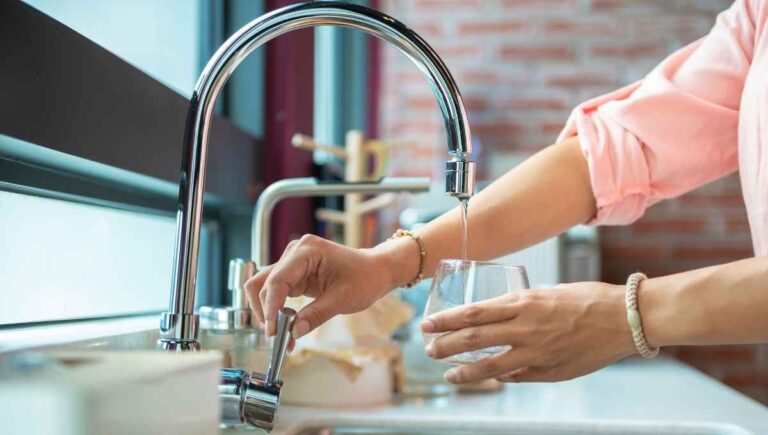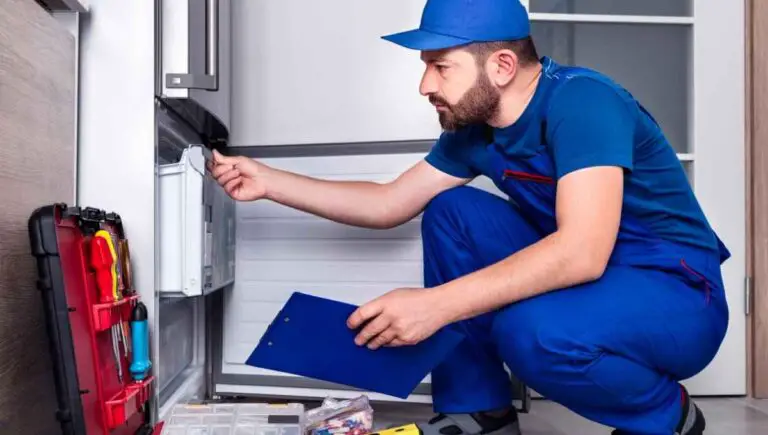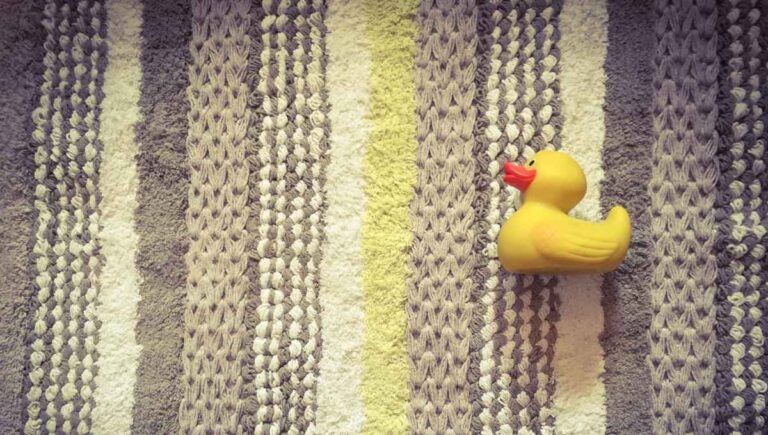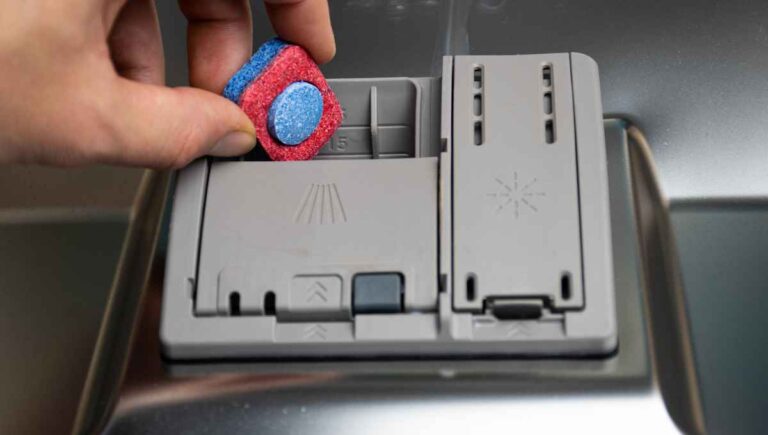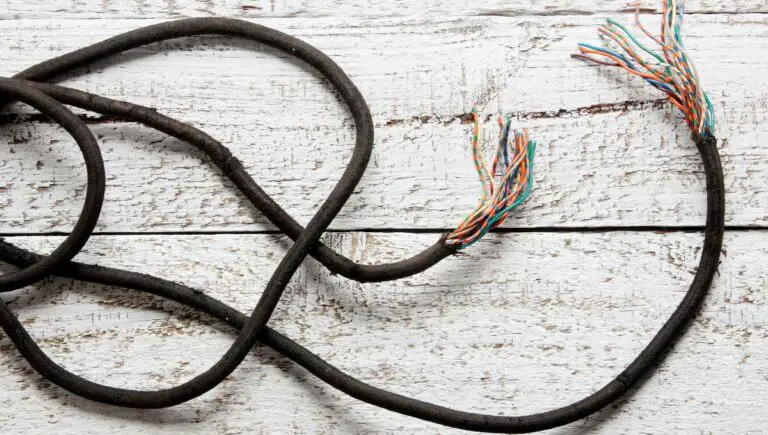My Refrigerator Stopped Making Ice (Here’s How to Fix It!)

One of the greatest perks of modern life is having a refrigerator that makes quality ice cubes on demand. However, it can be devastating if your fridge stops producing those magical frozen cubes! So what can you do if your refrigerator stops making ice?
If your fridge isn’t making ice, the problem may be the water lines. Check your lines to ensure they haven’t been disconnected or blocked up. There may be ice build-up you need to clear out for your refrigerator to begin making ice again.
Unfortunately, not all ice maker problems are that easy to fix. In this article, we’ll dig deeper into potential refrigerator ice maker problems, how to fix them, and how much those fixes might cost you. So chill with us for a bit!
This post contains affiliate links. This means Household Blogger may earn a commission should you make a purchase using any of our links. Please refer to our full affiliate disclosure policy for full details.
Here’s a Quick Pro Tip!
There are a handful of reasons why your ice maker may have stopped producing ice. But, to ensure your refrigerator is doing its job properly, it needs to be clean.
Here are our top choices when it comes to keeping your refrigerator and ice maker clean and functioning optimally:
1. Replacement Filters – Approved for Whirlpool, Maytag, Amana, KitchenAid, and Jenn Air!
2. Line Cleaner – Makes cleaning and unfreezing your lines a breeze!
3. Ice Machine Cleaner – A non-toxic cleaner designed to keep your ice fresh and taste-free!
Refrigerators
Having a refrigerator that makes its own ice is great. It saves you from having to fill up ice cube trays manually, and it saves space in your fridge.
But, when that convenience suddenly stops, it can be frustrating. So, in this section, we’ll discuss why your fridge stopped making ice.
Why Would a Refrigerator Stop Making Ice?
The most common reason your refrigerator stopped making ice is that something is wrong with the water line. It either got disconnected or blocked. You’ll want to check the fill tubes and the cup in the back of the ice maker for ice build-up and blockages.
If ice blockage is the problem, you’ll need to remove the tube that connects the fill valve to the ice maker and clean it out.
Once you’ve reconnected the tube, if your fridge still isn’t making ice, that tube may need to be replaced.
What Do You Do When Your Ice Maker Stops Making Ice?
If your refrigerator has stopped making ice, check all parts of the ice maker for ice build-up. This will include filters, fill pipes, fill pumps, drains, and the condenser. Those parts may be covered in ice, causing a fault or a blockage.
Depending on what parts are covered in ice, you may need to empty and dethaw your refrigerator. To unthaw a fridge, start by removing and cold storing any perishables in the fridge.
Then, unplug the fridge, and allow the fridge to reach ambient room temperature. Be sure to wipe up any excess water!
How Often Do Ice Makers Break?
The average lifespan for a refrigerators ice maker is between three and ten years. Your refrigerator ice maker’s useful life will highly depend on the quality of your water and how often you make use of the ice maker.
As you’ve probably already assumed, your ice maker may not last as long if you have chemical-laden or very hard water. You may also find that you have to replace the filters or water lines more often.
How Long Should an Ice Maker Last?
With proper use and maintenance, your fridge’s ice maker should last up to ten years. However, if you have hard water or don’t change your filters properly, it may last as little as two to three years.
This is just one reason it’s important to keep up with the maintenance schedule for your refrigerator. Suppose you do not change the filters every six months and monitor the temperature of the fridge and freezer to ensure it’s within the optimal range.
In that case, it can greatly decrease your refrigerator’s ability to make ice.
You might also enjoy our post on Can I Drink Water Out of the Kitchen Sink?
How Long Do I Unplug My Fridge to Reset the Ice Maker?
You should only need to unplug your fridge for about five to ten minutes to reset the ice maker. However, if this does not work, you may need to thaw out the fridge, which is a much longer process.
If unplugging your fridge doesn’t work, you can also check your ice maker to see if it has a reset button. If so, hold the reset button down for ten seconds, then let go, and your ice maker should reset itself almost immediately.
Clogs
If your ice maker suddenly stops working, it’s safe to assume clog first.
However, clogs can happen in a couple of different parts of the ice maker’s system, and in this section, we’ll dive into how to check those sections and remove that clog quickly and efficiently!
How Do I Unclog My Ice Maker Water Line?
To unclog your water line, start by detaching the line. Check it for any breaks or damage. If it is undamaged, rinse the line with hot water until it runs smoothly. You may also want to disinfect the line before reattaching it.
If you do not want to go through the process of unhooking your water line, you can also try using an unfreezing kit to clear any blockages. You will still need a bucket as well to catch any water and cleaner.
Why Is My Ice Maker Not Working, but the Water Does?
If you’ve got clean, cold water from your refrigerator, but your ice maker has stopped working, odds are the filter for the ice maker is dirty and is blocking the water from reaching the ice maker.
You should replace your water filter every six months or more often if you have hard water. Fortunately, many smart fridges will now tell you when the filter needs replacing. However, if you don’t have a smart fridge, you may want to mark it on the calendar.
Can Unplugging the Fridge Reset the Ice Maker?
Unplugging your fridge for five to ten minutes before plugging it back in will cycle most refrigerators and force a restart of its systems, including the ice maker. However, this is not universal.
Many ice makers have a reset button right on the ice box. If your refrigerator has one, depress the button for ten seconds, then release it.
This should trigger a system reset, and your ice maker should start making and dispensing ice again.
How Do You Know if Your Refrigerator Water Line Is Clogged?
You’ll know your refrigerator water line is clogged when the line is properly connected and water is entering the line but not coming out the other side. The most common reason for clogged lines is ice.
You can clear ice build-up in water lines by removing the water line and flushing it. You can also clean out the water lines at that time to ensure no bacteria has entered the line from flushing it out.
Can Your Ice Maker Freeze Up?
It is entirely possible your ice maker freezes up. If there is excess moisture in your freezer, for example, if the door was left open and food started to thaw and then froze again, you may find ice build-up from the moisture.
If this happens, you may have to thaw out your freezer in order to prevent ice build-up and clogs. Too much ice build-up can cause damage to your freezer’s compressor.
This can greatly decrease the lifespan of your freezer and should be avoided.
Fixes
Now that we’ve discussed what causes clogs and some other reasons your refrigerator might have stopped making ice let’s break down what you can do to fix it!
How Do I Force My Ice Maker to Cycle?
You can force your ice maker to cycle by locating the reset button (if your model has one, not all do.) Pressing the button for ten seconds should start a reset. If your model doesn’t have this option, unplug your fridge for five to ten minutes to force a cycle.
You can also force it to cycle by pressing down the wire arm of the ice maker. This triggers the ice maker to think that the unit is out of ice and needs to make more.
The unit should start producing ice if nothing is clogging up the works.
How Do You Jumpstart an Ice Maker?
You can jumpstart your refrigerator ice maker by locating the gears inside the fixture, then using a flat screwdriver to rotate the gear counterclockwise until it clicks. This should trigger the ice maker to produce ice.
If this doesn’t sound like something you want to do, you can also attempt to cycle your ice maker by either unplugging the fridge for five to ten minutes or by pressing the reset button on the ice maker for ten seconds.
How Do I Know if My Ice Maker Motor Is Bad?
If you’ve tried cycling your refrigerator, checked the water lines and filters, and cleared any ice build-up, but your ice maker still isn’t making ice, odds are the motor has gone bad.
The good news is that you can purchase a new ice maker motor, and they are typically under $100!
So you should be able to take out the old motor and replace it with a new one with minimal tools and hassle.
How Do I Reset My Ice Maker?
Most refrigerator ice makers have a reset button on the ice box. You can typically find it at the bottom of the box. Simply press the reset button for approximately ten seconds, and it should reset.
If your icebox does not have a reset button, or if the reset button did not work, you can try cycling the entire refrigerator.
To do so, unplug the refrigerator for five to ten minutes to allow the power to drain, then plug it back in.
Where Is the Reset Button on an Ice Maker?
An ice maker’s reset button is typically found on the back or bottom of the ice box. However, each manufacturer is different, and some models do not have a reset button at all.
You can check your manufacturer booklet for an exact location and instructions on how to reset your ice maker. However, a good rule of thumb is to press the reset button for about ten seconds.
Costs
We know that the ice maker is a great perk of having a refrigerator, but once it goes bad, what do you do? It’s frustrating to think this perk is gone unless you’re willing to pay a lot to fix it. But is it really that expensive? Let’s talk about it now!
How Much Does It Cost to Replace a Refrigerator Ice Maker?
If you hire a professional to come in and replace your fridge’s ice maker, expect it to cost up to $500 for the unit and the labor associated with the replacement. Doing it yourself will cost around $250, depending on the parts.
If you decide that replacement is too costly, you may want to consider getting a countertop portable ice maker. These ice makers weigh under 50 pounds and make nugget ice continuously.
Plus, it’s self-cleaning!
How Much Does It Cost to Fix an Ice Maker?
Having a professional fix your ice maker typically costs between $100-$300, depending on the model of the refrigerator and the cost of the associated labor and materials.
You can also find most replacement parts online and fix them yourself to save on labor. Motors typically run around $50, plus you’ll need the tools necessary to remove and replace any broken parts.
Do Plumbers Repair Ice Makers?
Plumbers are in high demand, and yes, they do repair ice makers and other water line-related refrigerator repairs. You can call your local plumber to see if they specialize in refrigerator water lines, or you can search online for one in your area.
Another option is to call your refrigerator manufacturer and see if they have a professional who can come and repair your ice maker.
They may send you out a plumber that they have contracted with for repairs.
Related Questions
Is It Cheaper to Fix a Refrigerator or Buy a New One?
As long as your refrigerator is still in production, it is typically cheaper to replace the broken part rather than purchase an entire new refrigerator. While parts and labor aren’t usually cheap, neither is a new refrigerator!
However, if your refrigerator is an old model and parts are hard to come by, you may spend more to find replacement parts than the refrigerator is worth.
There does come a point where buying a newer model just makes financial sense.
How Much Does It Cost to Install an Ice Maker?
Including labor and materials, it costs, on average, $300-$400 to install an ice maker in a refrigerator. This will cover removing the old model and installing the new one. Again, most of the cost comes from labor.
You can cut out the cost of installing an ice maker by doing it yourself. Of course, you’ll need tools and the new ice maker, but you’ll save hundreds in labor costs!
In fact, just buying the ice maker should cost less than $100.
How Long Does It Take To Make Ice After a Reset?
An ice maker can take up to two hours to fully fill after a reset, though it should start the ice-making process almost immediately. Remember, once you’ve reset the ice maker, you still have to give the water time to freeze into cubes before they dispense.
A single ice-making cycle typically takes about 90 minutes between filling the trays and freezing the water into ice cubes.
Once completely frozen, they’ll dispense into the holding unit, and the trays will refill as needed.
Final Thoughts
Having ice at your disposal is a great perk of certain refrigerators and one you don’t want to miss out on.
If your refrigerator suddenly stops making ice, be sure to check your filter and water lines for blockages and ice build-up. It’s the most common reason fridges stop producing ice.







